Role Singer | Website ritchievalens.com Years active 1957–1959 Awards Grammy Hall of Fame | |
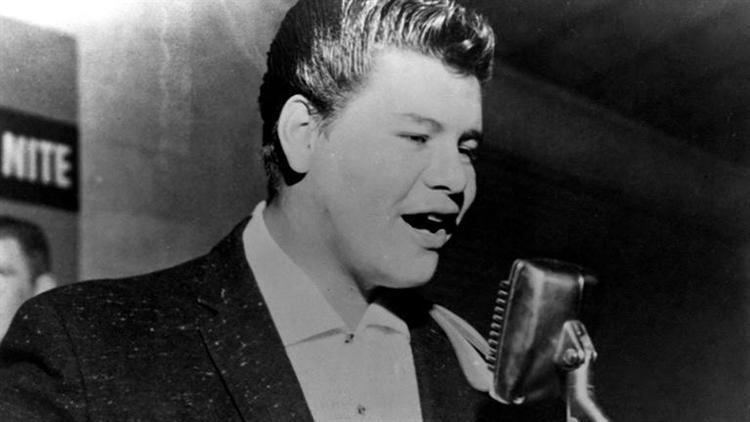 | ||
Birth name Richard Steven Valenzuela Born May 13, 1941Pacoima, California, United States ( 1941-05-13 ) Occupation(s) singer, songwriter and guitarist Parents Joseph Steven Valenzuela, Concepcion Valenzuela Siblings Mario Ramirez, Connie Lemos, Bob Morales, Irma Norton Similar People | ||
Ritchie valens mini biography
Richard Steven Valenzuela (May 13, 1941 – February 3, 1959), known as Ritchie Valens, was an American singer, songwriter, and guitarist. A rock & roll pioneer and a forefather of the Chicano rock movement, Valens' recording career lasted eight months, as it abruptly ended when he died in a plane crash.
Contents
- Ritchie valens mini biography
- Ritchie valens unseen photo 1959 45rpm donna ludwig
- Early life
- Career
- Death
- Legacy
- Representation in other media
- Tributes
- Original albums
- Compilation albums
- References
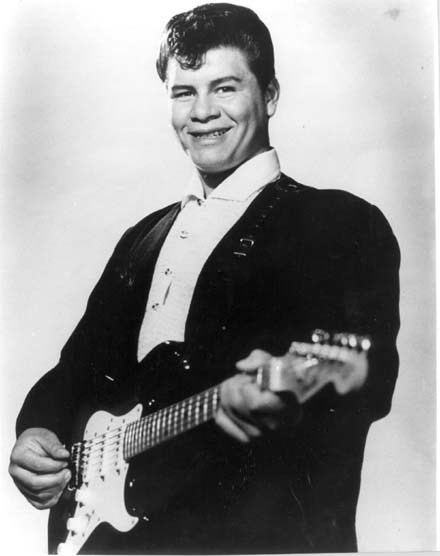
During this time, he had several hits, most notably "La Bamba", which he had adapted from a Mexican folk song. Valens transformed the song into one with a rock rhythm and beat, and it became a hit in 1958, making Valens a pioneer of the Spanish-speaking Rock and roll movement.
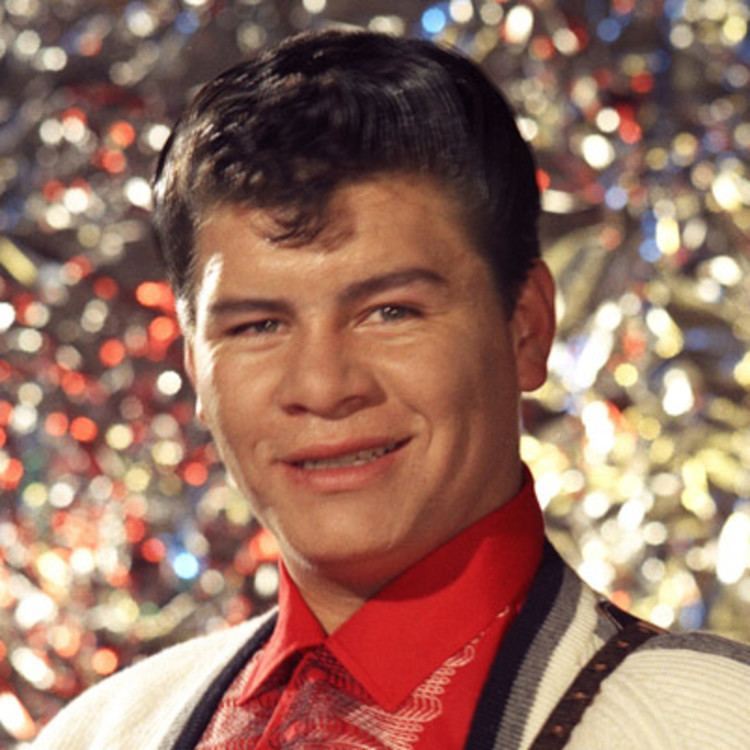
On February 3, 1959, on what has become known as "The Day the Music Died", Valens died in a plane crash in Iowa, an accident that also claimed the lives of fellow musicians Buddy Holly and J. P. "The Big Bopper" Richardson, as well as pilot Roger Peterson. Valens was inducted into the Rock and Roll Hall of Fame in 2001.
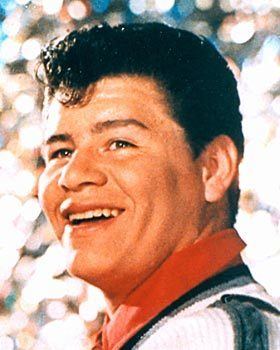
Ritchie valens unseen photo 1959 45rpm donna ludwig
Early life
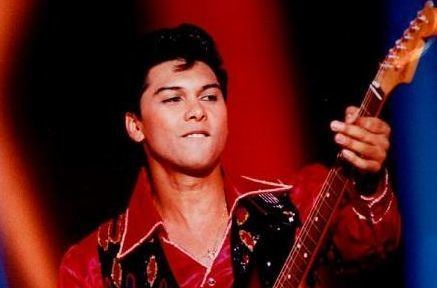
Valens was born Richard Steven Valenzuela in Pacoima, a neighborhood in the San Fernando Valley region of Los Angeles. His parents were Joseph Steven Valenzuela (1896–1952) and Concepcion Reyes (1915–1987); he was of Mexican descent and the second of five siblings with older brother Bob Morales, younger sisters Connie and Irma, and younger brother Mario Ramirez. Ritchie Valenzuela was brought up hearing traditional Mexican mariachi music, as well as flamenco guitar, R&B, and jump blues. Valenzuela expressed an interest in making music of his own by the age of five, and he was encouraged by his father to take up guitar and trumpet, and later taught himself the drums. Though Valenzuela was left handed, he was so eager to learn the guitar that he mastered the traditionally right-handed version of the instrument. By the time Valenzuela was attending junior high school, he brought the guitar to school and would sing and play songs to his friends on the bleachers. When he was 16 years old, he was invited to join a local band, the Silhouettes (not the group famous for its hit song "Get a Job"), as a guitarist, and when the main vocalist left the group, Valenzuela assumed the position. On October 19, 1957, he made his performing debut with the Silhouettes. Valenzuela attended Pacoima Junior High School (now Pacoima Middle School).
Career

A self-taught musician, Valenzuela was an accomplished singer and guitarist. At his appearances, he often improvised new lyrics and added new riffs to popular songs while he was playing.

Bob Keane, the owner and president of small Record label Del-Fi Records in Hollywood, was given a tip in May 1958 by San Fernando High School student Doug Macchia about a young performer from Pacoima by the name of Richard Valenzuela. Kids knew the performer as "the Little Richard of San Fernando". Swayed by the Little Richard comparison, Keane went to see Valenzuela play a Saturday morning matinée at a movie theater in San Fernando. Impressed by the performance, he invited the youth to audition at his home in the Silver Lake area of Los Angeles, where he had a small recording studio in his basement. An early stereo recorder (a two-track Ampex 601-2 portable) and a pair of Neumann U-47 condenser microphones comprised his recording equipment.
After this first audition, Keane signed Ritchie to Del-Fi on May 27, 1958. At this point, the musician took the name "Ritchie" because, as Keane said, "There were a bunch of 'Richards' around at that time, and I wanted it to be different." Similarly, Keane recommended shortening his surname to "Valens" from Valenzuela to widen his appeal beyond any obvious ethnic group.
Valens demonstrated several songs in Keane's studio that he later recorded at Gold Star Studios in Hollywood. The demos primarily consisted of Valens singing and playing guitar, but some of them also featured drums. These originals can be heard on the Del-Fi album, Ritchie Valens – The Lost Tapes. Two of the tracks laid down in Keane's studio were taken to Gold Star Studios and had additional instruments dubbed over to create full-band recordings. "Donna" was one track (although two other preliminary versions of the song were made, both available on The Lost Tapes), and the other was an instrumental entitled "Ritchie's Blues".
After several songwriting and demonstration recording sessions with Keane in his basement studio, Keane decided that Valens was ready to enter the studio with a full band backing him. The musicians included René Hall, Carol Kaye, and Earl Palmer. The first songs recorded at Gold Star Studios, at a single studio session one afternoon in July 1958, were "Come On, Let's Go", an original (credited to Valens/Kuhn, Keane's real name), and "Framed", a Leiber and Stoller tune. Pressed and released within days of the recording session, the record was a success. Valens's next record, a double A-side, the final record to be released in his lifetime, had the song "Donna" (written about a real girlfriend) coupled with "La Bamba". It sold over one million copies, and was awarded a gold disc by the RIAA.
By the autumn of 1958, the demands of Valens' career forced him to drop out of high school. Keane booked appearances at venues across the United States and performances on television programs. Valens had a fear of flying due to a freak accident at his junior high school when, on January 31, 1957, two airplanes collided over the playground, killing or injuring several of his friends. Valens had been at his grandfather's funeral that day, but was upset about the loss of his friends.
He eventually overcame his fear enough to travel by airplane for his career. He went to Philadelphia to appear on Dick Clark's American Bandstand television show on October 6, where he sang "Come On, Let's Go". In November, Valens flew to Hawaii, where he performed alongside Buddy Holly and Paul Anka. Valens was added to the bill of legendary disc jockey Alan Freed's Christmas Jubilee in New York City, singing with some of those who had greatly influenced his music, including Chuck Berry, Bo Diddley, the Everly Brothers, Duane Eddy, Eddie Cochran, and Jackie Wilson. On December 27, he returned to Philadelphia and American Bandstand, this time performing "Donna".
After returning to Los Angeles, Valens filmed an appearance in Alan Freed's movie Go Johnny Go! In the film, he appears in a diner miming his song "Ooh! My Head", using a Gretsch 6120 guitar, the same model Eddie Cochran owned. Between the live appearances, Valens returned to Gold Star Studios several times, recording the tracks that would comprise his two albums.
In early 1959, Valens was traveling the Midwest on a multiple-act rock-and-roll tour dubbed "The Winter Dance Party". Accompanying him were Buddy Holly, Dion and the Belmonts, J. P. "The Big Bopper" Richardson and Frankie Sardo. All performers were augmented by Holly's new backup band, including Tommy Allsup on guitar, Waylon Jennings on bass, and Carl Bunch on drums.
Conditions for the performers on the tour buses were abysmal and bitterly cold. Midwest weather took its toll on the party. Carl Bunch had to be hospitalized with severely frostbitten feet, and several others, including Valens and the Big Bopper, caught the flu. The show was split into two acts, with Valens closing the first act. After Bunch was hospitalized, Carlo Mastrangelo of the Belmonts took over the drumming duties. When Dion and the Belmonts were performing, the drum seat was taken by either Valens or Buddy Holly. A surviving color photograph shows Valens at the drum kit. Black and white photos found in 2014 taken by Mary Gerber on February 2, 1959, which are on display at the Surf Ballroom show Buddy Holly playing drums for Dion for Dion's drummer had frostbitten feet.
Death
After the February 2, 1959, performance in Clear Lake, Iowa (which ended around midnight), Holly, Richardson, and Valens flew out of the Mason City airport in a small plane that Holly had chartered. Valens was on the plane because he won a coin toss with Holly's backup guitarist Tommy Allsup. Holly's bassist, Waylon Jennings, voluntarily gave up his seat on the plane to J.P. Richardson, who was ill with the flu. Just after 1:00 am on February 3, 1959, the three-passenger Beechcraft Bonanza departed for Fargo, North Dakota, and crashed a few minutes after takeoff for reasons still unknown. The crash killed all three passengers and pilot Roger Peterson instantly upon impact. As with Holly and Richardson, Valens suffered massive and unsurvivable head injuries along with blunt force trauma to the chest. At 17, Valens was the youngest to die in the crash.
The tragedy inspired singer Don McLean to write his 1971 hit "American Pie", immortalizing February 3 as "The Day the Music Died". Valens's remains were buried at San Fernando Mission Cemetery, Mission Hills, California.
Legacy
Valens was a pioneer of Chicano rock and Latin rock and inspired many musicians of Mexican heritage. He influenced the likes of Los Lobos, Los Lonely Boys, and Carlos Santana, as he had become nationally successful at a time when very few Latinos were in American rock and pop music. He is considered the first Latino to successfully cross over into mainstream rock.
"La Bamba" proved to be his most influential recording, not only by becoming a pop chart hit sung entirely in Spanish, but also because of its successful blending of traditional Latin American music with rock. Valens was the first to capitalize on this formula, which was later adopted by such varied artists as Selena, Caifanes, Café Tacuba, Circo, El Gran Silencio, Aterciopelados, Gustavo Santaolalla, and many others in the Latin alternative scene. Ironically, the Valenzuela family spoke only English at home, and he knew very little Spanish. Valens learned the lyrics phonetically to record "La Bamba" in Spanish.
"Come On, Let's Go" has been covered by Los Lobos, the Ramones and the Pale Brothers (the Ramones on guitar, bass and drums and the Paley Brothers on vocals), Tommy Steele, the Huntingtons, Girl in a Coma, and the McCoys. In Australia, Johnny Rebb and his Rebels on Leedon/Canetoad Records covered the song. "Donna" has been covered by artists as diverse as MxPx, Cliff Richard, the Youngbloods, Clem Snide, Cappadonna, and Misfits.
Robert Quine has cited Valens's guitar playing as an early influence on his style. Valens also inspired Jimi Hendrix, Chan Romero, Carlos Santana, Chris Montez, and Keith O'Conner Murphy, among others.
Valens' nephew, Ernie Valens, has toured worldwide playing his uncle's songs, including a new version of the "Winter Dance Party" tour with Buddy Holly impersonator John Mueller. This tour has taken place at many of the original 1959 venues in the Midwest.
Valens' mother, Connie, who died in 1987, is buried alongside him.
Representation in other media
Tributes
In 1988, Ken Paquette, a Wisconsin fan of the 1950s era, erected a stainless-steel monument depicting a steel guitar and a set of three records bearing the names of each of the three performers killed in the accident. It is located on private farmland, about one-quarter mile west of the intersection of 315th Street and Gull Avenue, about 8 miles (13 km) north of Clear Lake. He also created a similar stainless-steel monument to the three musicians that was installed near the Riverside Ballroom in Green Bay, Wisconsin. That memorial was unveiled on July 17, 2003.
A park in Pacoima was renamed in Ritchie Valens' honor in the 1990s. Originally named Paxton Park, a city council member representing Pacoima, proposed the renaming to honor Valens so residents will "remember his humble background and emulate his accomplishments."
Musician Tommy Allsup started a club, "Tommy's Heads Up Saloon", in Dallas in 1979. The club was named for the fateful coin toss between Valens and him twenty years prior.
"Boogie with Stu" from Led Zeppelin's Physical Graffiti album was inspired by Valens' song "Oooh, My Head". It did not credit Valens or Bob Keane, instead crediting Valens' mother. Eventually, a lawsuit was filed by Keane, and half of the reward went to Valens' mother, although she was not part of the suit.
A section of the 5 Freeway in the northeast San Fernando Valley will be named after Valens. The Ritchie Valens Memorial Highway will be located between the 170 and 118 freeways.
